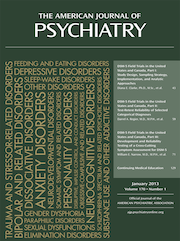The Bipolar Brain: Integrating Neuroimaging and Genetics
This is an extremely up-to-date and well-written compilation of chapters by leaders in the field of the interface between neuroimaging and genetics in bipolar disorder. This new field is, like so many human activities, a product of both disappointment and hope. Classic genetic studies of twins and adoptees in bipolar disorder showed significant heritability but disappointingly could never pin down a Mendelian or non-Mendelian mechanism of the genetic transmission. The era of sequencing the genome came and went, and no genes have been shown to make more than a tiny and perhaps nonspecific contribution to the etiology of bipolar disorder. A new hope is that some common genotypes might have identifiable effects on brain function and that these functional effects of genes could lead to an understanding of mental disorder through dynamic pathways rather than DSM diagnoses.
The history of imaging studies in psychiatry and bipolar disorder has perhaps been parallel to the story of genetic studies. X-ray studies of the brain in the past were useful to psychiatry only to rule out simple neurological disorders, such as subdural hematoma. CT scans found slight ventricular enlargement in bipolar disorder as in schizophrenia, but the overlap was so great and the consistency so questionable that these findings were of no diagnostic use. More recent imaging with functional MRI and metabolic imaging have yielded many small studies suggesting statistical deviation in some bipolar patient groups compared with controls, but the absence of a summary chapter with a clear finding that could be useful for the diagnosis of bipolar disorder in this volume is striking.
The hope presented in this book is that an integration of imaging research with genetic research might move us toward an answer. This book is a fine expression of the momentum spearheaded by the National Institute of Mental Health toward a “circuits” approach to psychiatric disorder and in that sense is a good introduction for anyone interested in psychiatric research of areas in favor by those authorities doing much of the funding today. In this reviewer’s early training, disorders that could be located anatomically to a circuit were considered to be “neurological” and therefore unlikely to be treatable; disorders of biochemistry and receptors were thought to be somehow functional and more amenable to orally administered pharmacological interventions that by their nature affected whole metabolic systems in the brain. Clearly that mode of thinking is no longer with us. Specific circuits might be dysfunctional in specific psychiatric disorders, and those circuitry abnormalities might be revealed by the new imaging techniques. Different but specific genotypes could cause the same circuitry abnormality, for instance, by revving up the output of an inhibitory circuit or alternatively increasing its input. Thus, we may have some answers if we study the gene and the imaging together, even if the genes or the imaging alone do not seem to give us diagnostic tools. The book is strong on models, but as we learned from psychoanalysis, a smoothly worded model does not guarantee veracity. This book’s hope is well formulated in the forward by Fred Goodwin. Steve Strakowski’s honest summary in the final chapter makes it clear that the book’s usefulness is for the psychiatric researcher and not the practitioner or diagnostician.



